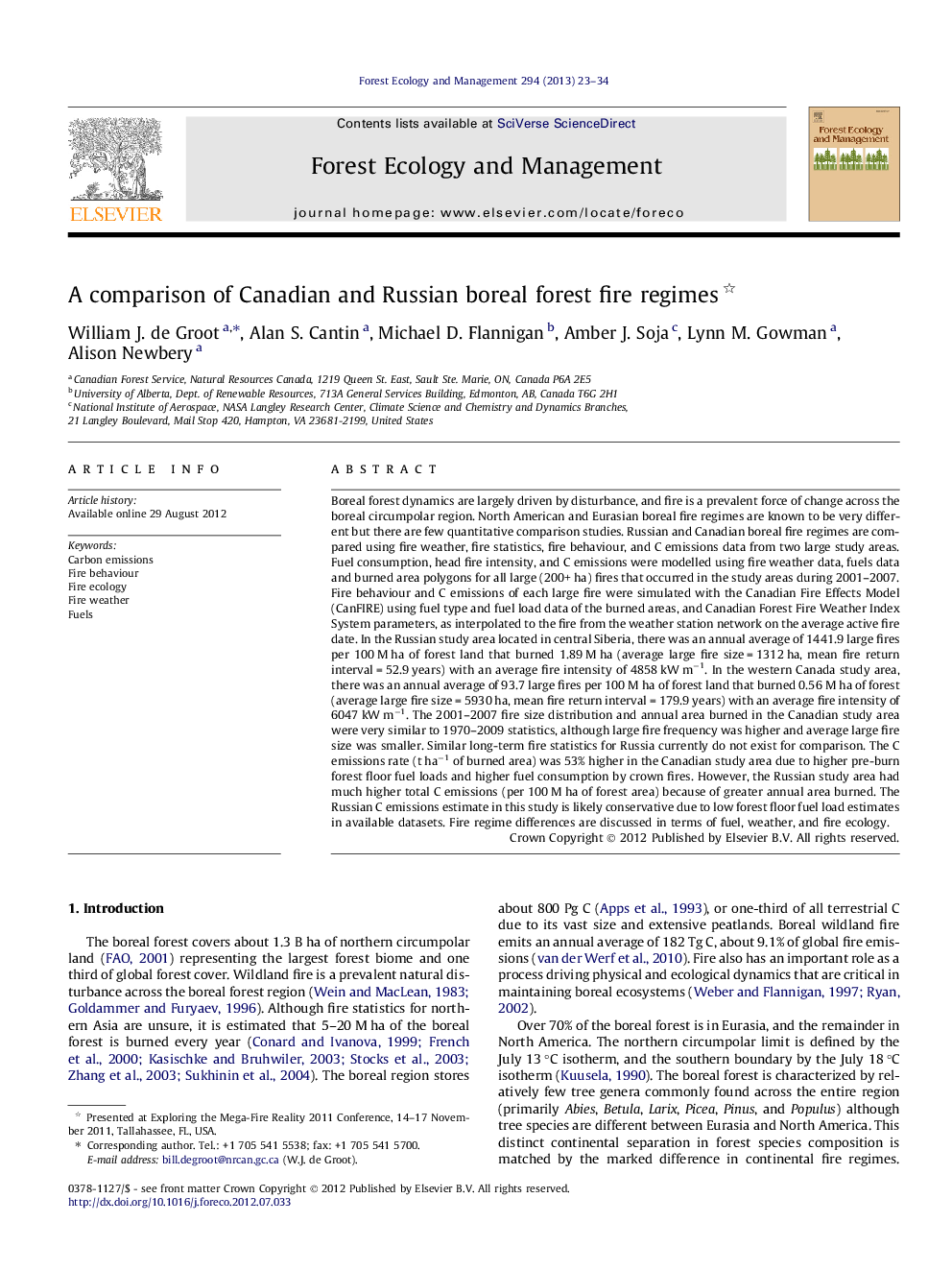| کد مقاله | کد نشریه | سال انتشار | مقاله انگلیسی | نسخه تمام متن |
|---|---|---|---|---|
| 86874 | 159219 | 2013 | 12 صفحه PDF | دانلود رایگان |

Boreal forest dynamics are largely driven by disturbance, and fire is a prevalent force of change across the boreal circumpolar region. North American and Eurasian boreal fire regimes are known to be very different but there are few quantitative comparison studies. Russian and Canadian boreal fire regimes are compared using fire weather, fire statistics, fire behaviour, and C emissions data from two large study areas. Fuel consumption, head fire intensity, and C emissions were modelled using fire weather data, fuels data and burned area polygons for all large (200+ ha) fires that occurred in the study areas during 2001–2007. Fire behaviour and C emissions of each large fire were simulated with the Canadian Fire Effects Model (CanFIRE) using fuel type and fuel load data of the burned areas, and Canadian Forest Fire Weather Index System parameters, as interpolated to the fire from the weather station network on the average active fire date. In the Russian study area located in central Siberia, there was an annual average of 1441.9 large fires per 100 M ha of forest land that burned 1.89 M ha (average large fire size = 1312 ha, mean fire return interval = 52.9 years) with an average fire intensity of 4858 kW m−1. In the western Canada study area, there was an annual average of 93.7 large fires per 100 M ha of forest land that burned 0.56 M ha of forest (average large fire size = 5930 ha, mean fire return interval = 179.9 years) with an average fire intensity of 6047 kW m−1. The 2001–2007 fire size distribution and annual area burned in the Canadian study area were very similar to 1970–2009 statistics, although large fire frequency was higher and average large fire size was smaller. Similar long-term fire statistics for Russia currently do not exist for comparison. The C emissions rate (t ha−1 of burned area) was 53% higher in the Canadian study area due to higher pre-burn forest floor fuel loads and higher fuel consumption by crown fires. However, the Russian study area had much higher total C emissions (per 100 M ha of forest area) because of greater annual area burned. The Russian C emissions estimate in this study is likely conservative due to low forest floor fuel load estimates in available datasets. Fire regime differences are discussed in terms of fuel, weather, and fire ecology.
► Most large fires occur in spring in central Russia and mid-summer in western Canada.
► In Russia, large fire frequency was 10× greater and area burned was 3× greater.
► Average large fire size was 4× greater in Canada.
► C emissions rate was higher in Canada but total C emissions was 2× higher in Russia.
► The crown fire rate was 57% in Canada and 6% in Russia.
Journal: Forest Ecology and Management - Volume 294, 15 April 2013, Pages 23–34